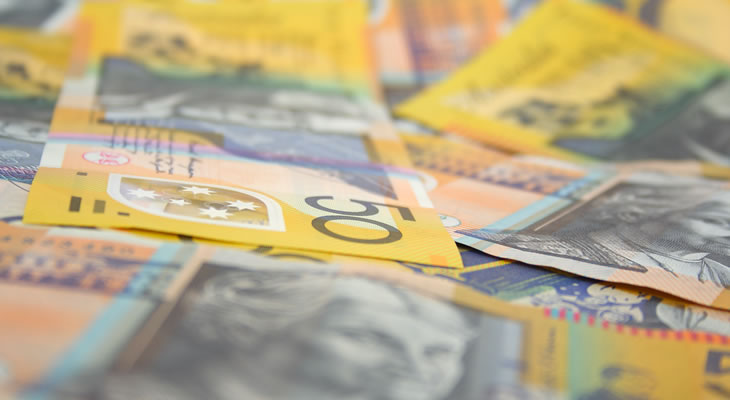After reaching just above the week’s opening levels, the GBP AUD exchange rate weakened slightly on Wednesday afternoon due to increased Brexit jitters.
UK Prime Minister Theresa May appeared to take a tough stance against the EU following tension between herself and European Commission leader Jean-Claude Juncker this week.
The Pound slipped after May reiterated that Britain would be better off with no UK-EU deal than a bad deal. If UK-EU negotiations start with this rocky tone, the Pound could have further to fall. However, UK data could still provide important GBP support.
[Previously updated 12:38 BST 03/05/2017]
The GBP AUD exchange rate continued to recover during Wednesday’s European session and trended near the week’s opening levels of 1.72 once again.
This was largely due to continued weakness in the Australian Dollar. The risky currency weakened on Wednesday as investors firmed in the US Dollar ahead of the day’s Federal Reserve news.
AUD demand was little influenced by Wednesday’s Australian services PMI from April, which improved from 51.7 to 53.
Demand for the Pound was also decent which helped GBP AUD to rise. As well as Tuesday’s impressive manufacturing PMI, Wednesday’s UK construction PMI also beat expectations. This bolstered market hopes that Britain’s key services sector may also have seen a strong April.
[Previously updated 16:42 BST 03/05/2017]
Demand for the Pound improved notably on Tuesday afternoon as investors digested the day’s UK manufacturing PMI amid hopes that other private sector activity had been better than expected in April.
As a result, GBP AUD regained some of Monday’s losses, but still trended in the region of 1.71 throughout Tuesday’s European session.
Australian Dollar movement is unlikely to see a significant change of direction on Wednesday, but AiG’s April services PMI for Australia could influence the currency slightly. Most traders will be waiting for Thursday’s UK PMIs and Australian trade balance data before making this week’s big moves though.
[Published 11:08 BST 02/05/2017]
The Pound to Australian Dollar exchange rate has fallen from its highs this week, but Pound movement improved slightly on Tuesday when UK manufacturing stats beat expectations.
GBP AUD recovered from a low of 1.70 to trend in the region of 1.71.
April’s UK manufacturing PMI from Markit was the main reason the Pound was able to firm against the ‘Aussie’, as it came in well above expectations.
UK manufacturing was predicted to slow slightly, from 54.2 to 54. However, the results came in with a much higher-than-expected 57.3.
Analysts noted that the drop in Pound value since last year has kept UK exports competitive, leading to lasting strength for the manufacturing sector.
Ms Lee Hopley, EEF chief economist, stated that the manufacturing sector is still defying expectations;
‘Against all expectations nine months ago, UK manufacturing appears to be in rude health, having navigated significant exchange rate swings and rising input costs, companies are capitalising on the upswing in the world economy and pressing ahead with some new investments.’
With manufacturing beating expectations, this also increased market hopes that Britain’s economy may not be slowing as much as previously feared.
UK construction data from April will be published on Wednesday, followed by Britain’s key services and composite PMIs on Thursday.
Construction is also expected to slow, from 52.2 to 52, as is services from 55 to 54.5.
After a better-than-expected manufacturing report, an unexpected rise in services would improve the Pound’s outlook.
The drop in the Pound last year may have bolstered the competitiveness of UK factory activity, but it has also led to higher UK consumer prices. Analysts have continued warning that this will lead to worse activity in consumer-facing sectors, like the services sector which makes up a notable portion of Britain’s growth.
As a result, better-than-expected manufacturing may not necessarily mean other PMI prints will also beat expectations. If UK services are indeed better-than-expected, the Pound outlook will improve but the opposite is also true as Sterling will weaken further if they disappoint.
Meanwhile, demand for the Australian Dollar has improved this week.
Investors sold GBP AUD from its highs on profit-taking on Monday, while ‘Aussie’ demand improved further following a relatively optimistic Reserve Bank of Australia (RBA) meeting.
The RBA left Australian monetary policy frozen as expected, but the bank was more optimistic than it had been earlier in the year about Australia’s job market.
This, as well as ongoing efforts from Australian regulators to help cool Australian house prices, has made investors a little more optimistic about the Australian Dollar outlook again.
At the time of writing this article, the Pound to Australian Dollar exchange rate trended in the region of 1.71. The Australian Dollar to Pound exchange rate traded at around 0.58.


Comments are closed.